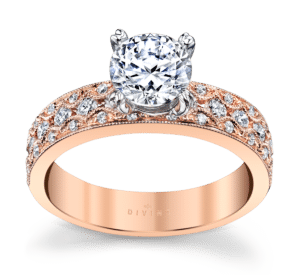Throughout history, gold has been one of the most sought-after metals in the world. It’s been used as currency, to decorate objects as a thing of beauty, and is also used for industrial purposes.

In the jewelry industry, the word “gold,” when used by itself, means “all gold” or “pure” gold, meaning 24 karat (24K) gold. Because 24K gold is soft, it’s usually mixed with other metals called alloys to increase its hardness and durability. If a piece of jewelry is not 24 karat gold, the karat quality should accompany any claim that the item is gold.
The karat quality marking tells you what proportion of gold is mixed with the other metals. Fourteen-karat (14K) jewelry contains 14/24 or 58.3% gold, with 10/24 parts of an alloy metal. The higher the karat rating, the higher the proportion of gold in the piece of jewelry.
Jewelry should be marked with its karat quality. Near the karat quality mark, you should also see the name or the U.S. registered trademark of the company that will stand behind the mark. The trademark may be in the form of a name, symbol or initials. If you don’t see a trademark accompanying a quality mark on a piece of jewelry, look for another piece.
Are you ready to go for the gold? Below are some designs from our American Gem Society members that feature yellow, white, or rose gold, which is a mixture of gold with copper to create the pinkish, soft glow.
When it comes to cleaning gold, visit your jeweler for a professional cleaning. To clean your jewelry at home, be sure to ask your jeweler what at-home products are best for cleaning gold, especially if there are gemstones in the piece.









